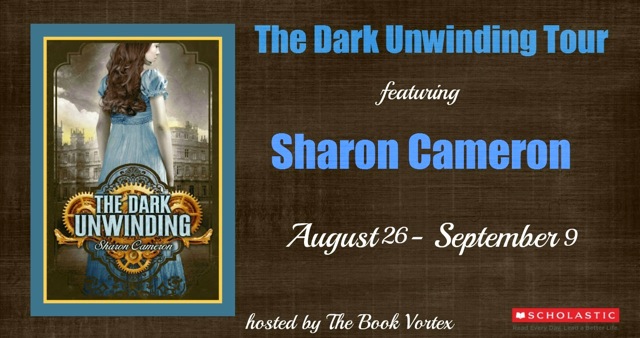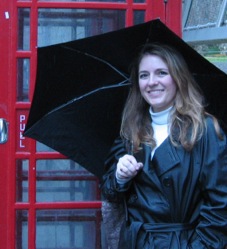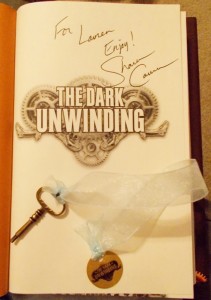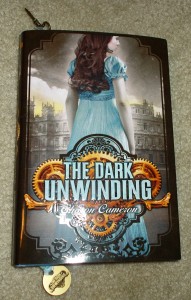
Multiple POV in a book = Ensemble cast in a movie
I’ve been reading a lot of books lately where the narrative follows multiple POVs (points of view. Which I guess means the abbreviation should be PsOV, but that looks WEIRD). Sometimes it’s just two characters, other times it’s four or more. Then I go to other blogs or Goodreads and see what others thought of the book. One of the things I’ve noticed come up in reviews a lot, with feelings running the gamut of emotions, is that we have widely varying preferences on POV.
Some people love the additional insight into the characters that multiple POVs offer. Others think of it as authorial laziness, and wish the author would just stick with one character and develop him or her more.
With me, it really depends on the book. Sometimes I adore multiple POVs. Other times, I agree that it feels like the author just wasn’t trying very hard. Or there’s a third category — the author obviously had a strong case for including someone else’s POV, but their editor probably needed to step up and cut it. Because while the added POV does add something interesting to the story, it doesn’t add enough to justify its presence.
Let’s take a look at some books that fall into each of these categories, and why, in my opinion, they work or don’t work.
When it Works

To me, Robin Hobb’s Liveship Traders trilogy is the gold standard of multiple POVs used to great benefit. This is an adult high fantasy series, and I think one of the things working in its favor is the scope of the story (and the fact that adult high fantasy is allowed to have some length to it). Probably many of you haven’t read this one (although you SHOULD), but just bear with me a moment while I walk through the elements that make multiple POVs work well. I’ll apply them to books you’ve read soon, I promise.
The characters are all very different
This series has seven POVs, and that’s assuming I didn’t miss one. But all of them are very different, following characters that come from varied backgrounds, each with their own unique voice.
Shreever – a sea serpent
Kennit – a pirate captain
Wintrow – a boy priest
Brashen – a sailor
Althea – a daughter of a prominent Trader family
Ronica – the widow of a Trader
Malta – the young, spoiled daughter of a captain
All seven of them would view the same situation in seven completely different ways. But most of the time, they don’t have to, which brings me to my next point:
No single character is capable of telling the whole story
Yes, some of them are paired up in the same location, but none of them has all the information necessary to make the story work. Kennit is incapable of telling the reader what is happening in the town, because he spends the majority of the book on his ship. Brashin can’t tell you what’s happening on Kennit’s ship, because he’s on a different ship. And Ronica can’t tell us a thing about life at sea, because she remains in the town.
Now I’m not saying that characters must be divided geographically for multiple POVs to work. It can most definitely work if the characters are in the same location. But what must always be true is that the story can’t be told by only one character. Not that it would be difficult to tell. It needs to be impossible to tell. As in, if you forced the author to rewrite the book from the perspective of one character only, the story simply wouldn’t work.
Each character has their own, important story
No character’s POV is included unless they have their own unique story that must be shared for us to be able to understand the story as a whole. And as a result, while some characters are featured more prominently than others, every single POV has its own motivations, its own stakes, and its own plot arc.
Examples of When it Works:











When it Doesn’t Work
When only one (or none) of the above is true, it just flat out doesn’t work. Here’s some of the common pitfalls I’ve seen.
Narrators are too similar
I’m not sure if this is a case of author voice being too strong or character voice being too weak. I think normally, it’s the latter. This is especially prevalent in books where every POV is still told in first person, so you don’t even have helpful names and pronouns to let you know who’s speaking. If I can’t figure out whose story I’m reading, I get frustrated and it’s impossible for me to invest in the story.
Or maybe I can figure out who’s talking, but I can’t figure out why they’re talking. If I’m thinking, “Why do I need Steve’s point of view? I already have John’s point of view on the subject, and Steve seems to agree with him,” you’ve lost me.
Narrators don’t bring me new (or necessary) information
Maybe you’re writing a book about a girl searching for her kidnapped boyfriend. And you think, “Oooh, you know what would be neat? The scene where the boyfriend gets abducted!” And you figure, you can’t do that one from the girl’s point of view, so you write it from the boyfriend’s. And maybe you include a scene or two about the boyfriend huddled in the dark, and the kidnapper punches him in the face a few times, but really, most of the story is about the girl’s search and how she ultimately finds and rescues him.
Was the boyfriend’s POV necessary? No, and here’s why.
1) We know he was kidnapped. While the kidnapping scene may be awesome, it doesn’t give us new information, unless the method of his kidnapping was absolutely pivotal to the plot and the girl would have never been able to figure it out on her own. And even if that’s the case, it may still not work (see below).
2) The girl is probably assuming he is scared. And if, when she finds him, his cheek is bruised and his lip is bloody, and he looks haggard, we can pretty well assume the kidnapper roughed him up. It’s not necessary to include the scenes of those things happening, because it is not new information that we would not have had otherwise.
Narrators don’t have their own arc
Even in reason #1 up above, where the method of kidnapping is essential to the plot, if we never hear something relevant from Boyfriend again, his POV still doesn’t work. The author needed to find another way to let us know what the method of kidnapping was, even if it’s really hard. I’m not going to be invested in a character whose perspective I only share for one or two scenes. A narrator needs to tell a story, not just a single event.
Examples of When it Doesn’t Work:







 *
*
When it Almost Works
And this one is tricky. If it almost works, I can still enjoy the book. Heck, I can even enjoy a book sometimes when it flat out doesn’t work (although in that case, I can’t LOVE the book).
When this happens, it’s pretty much always in books featuring three or more POVs. The author has a couple POVs working well, developing characters and arcs alongside each other, bringing us lots of necessary information…and then they slip in another one that’s not necessary. It kind of sneaks in, around all the stuff that is necessary, and it almost fools us into believing that we needed that character’s POV. But we didn’t. And any time we come across that character’s POV, the story starts to feel flat. So basically, the author could have had a solid multiple-POV book, but that one extra narrator kept it from completely working.
I can totally see why this happens. Authors love their characters. They want us readers to have ALL the information, because sometimes it’s painful to not show how fully developed and real these characters are in their heads. And when they are letting several other characters have their voice, and they’re all working well, I’d guess it can be extremely hard to see that this one character just isn’t working. But I would argue that there’s a way (albeit much more difficult for the writer) to develop those characters and give us all the necessary information without crawling inside their heads for a couple chapters.
Examples of When it Almost Works (Disclaimer: I still enjoyed these books):




I know I’ve read more than two books where it almost worked, but I honestly can’t think of what they were at the moment. It’s a pretty rare occurrence — normally the multiple POVs either work or they don’t.
So what do you think? Do you love multiple POVs or hate them? Does it depend on the circumstance? Are they necessary sometimes and superfluous at others? What books can you think of that I didn’t mention here that got it perfectly right (or horribly wrong)?
*I know a lot of you may disagree with me on Legend, but I maintain that the narrators in that book sound exactly. The. Same.
The City’s Son by Tom Pollock (September 8)
































